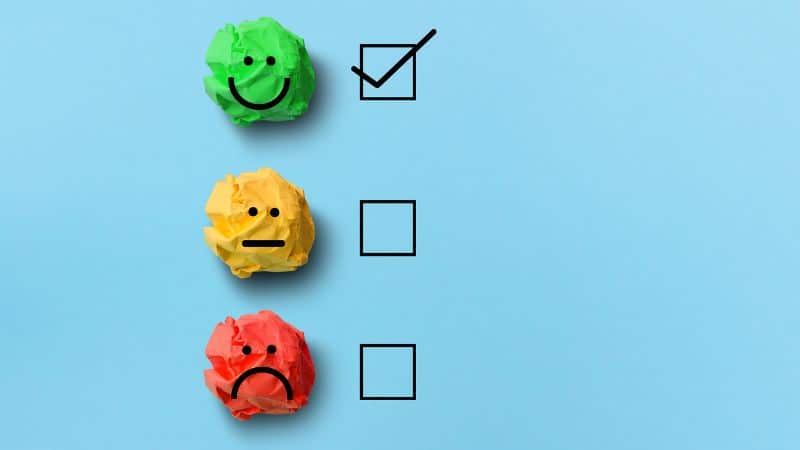Training sessions are a dime a dozen. But how can one discern the difference between training that simply takes time and one that truly imparts knowledge? The answer lies in the method of evaluation employed post-training.
Training Evaluation is a systematic process to assess the value and impact of training programs. Think of it as a diagnostic tool, ensuring that training isn’t just an event, but a transformative experience with tangible outcomes.
Breaking it down further, we categorize training evaluation into four distinct levels:
- Reaction – Capturing the immediate feedback of participants, giving insight into their initial impressions and feelings about the training.
- Learning – Diving deeper to understand what participants have genuinely learned. It’s the focus of our discussion today.
- Behavior – Assessing if and how participants are applying their new knowledge and skills in their daily roles.
- Results – Evaluating the real-world, tangible outcomes that can be attributed to the training, such as improved team performance or heightened customer satisfaction.
Level 2 Evaluation: Learning
While each level has its importance, Level 2, or the “Learning” evaluation, is crucial. It’s the bridge between initial reaction and long-term application, ensuring participants aren’t just attending but truly absorbing.
But how do we effectively gauge this learning, especially in a subject as intricate and multifaceted as leadership? Traditional tests and feedback forms might not capture the essence.
So, let’s venture beyond the conventional. Join me as we explore 12 creative ways to evaluate learning in leadership training, ensuring that your sessions don’t just inform, but truly transform.
Learning Portfolios
With Learning Portfolios, trainees amass a collection of works, notes, reflections, and activities carried out during the duration of the training. This portfolio serves as a tangible record of their learning journey, capturing both the breadth and depth of their understanding.
A well-curated portfolio can be likened to a personal leadership diary. It not only showcases the new knowledge and skills acquired but also reveals the trainee’s thought processes, challenges faced, and the strategies employed to overcome them.
It’s a holistic representation of the learning experience.
For instance, after a module on “Strategic Decision Making,” a trainee might include a detailed SWOT analysis they conducted, accompanied by reflective notes on the challenges they faced and the insights they gained while crafting it.
Another section might feature a role-playing script, highlighting their grasp of negotiation techniques.
Harnessing the Value of Learning Portfolios: Encourage trainees to regularly update their portfolios, making it a continuous activity rather than a last-minute task. Offer templates or guidelines to help them structure their content. Periodic review sessions, where trainees discuss and showcase select portfolio items, can also be beneficial, promoting peer learning and providing facilitators with insights into individual and group progress.
Leadership Simulation Challenges
Leadership Simulation Challenges plunge trainees into hypothetical, yet realistic, leadership situations. By navigating these scenarios, participants can demonstrate and apply their acquired skills and knowledge, offering facilitators a vivid picture of their learning in action.
Simulations immerse participants in lifelike environments, forcing them to move from theoretical understanding to practical application. When faced with real-time challenges, participants’ decision-making, problem-solving, and leadership strategies come to the fore, providing a rich context for evaluation.
Imagine a simulation where a trainee steps into the shoes of a CEO navigating a company crisis. They might have to address a worried workforce, strategize with their board, and handle media scrutiny.
Their decisions, reactions, and communication styles throughout the simulation can offer deep insights into their grasp of leadership principles.
Maximizing Leadership Simulation Challenges: Ensure that the scenarios are varied and cover the breadth of the training content. Debriefing sessions post-simulation are crucial. Here, participants can reflect on their decisions, discuss alternate strategies, and receive feedback. Additionally, using technology can enhance the simulation experience, with tools and platforms offering real-time data and analytics on participant performance.
Digital Quizzes & Gamification
Integrating Digital Quizzes and Gamification elements into your leadership training adds a layer of interactive evaluation. By engaging participants in quizzes or gamified modules, you can assess their grasp of theoretical knowledge and their ability to apply concepts in a fun, engaging manner.
Digital platforms make learning interactive. When participants are challenged through quizzes or game mechanics, they’re likely to be more engaged and invested in the learning process.
These digital tools also offer instant feedback, allowing participants to understand areas of strength and those that require further focus.
For example, after a session on “Team Dynamics in Leadership,” you could introduce a timed quiz. Questions could range from multiple-choice queries on leadership theories to scenario-based questions where participants choose how they’d react in specific team situations.
A gamified module could involve participants leading a virtual team on a project, earning points based on team outcomes, decision-making, and resource allocation.
Optimizing Digital Quizzes & Gamification: Choose user-friendly platforms that are mobile-compatible, ensuring accessibility. Incorporate a mix of question types and real-world scenarios to make the evaluation comprehensive. Leaderboards, badges, or certificates can add a competitive edge, motivating participants to perform better. Remember to regularly update and diversify the content to keep it fresh and challenging.
Reflective Journals
Incorporating Reflective Journals into leadership training allows trainees to pen down their thoughts, feelings, observations, and insights after each session. By routinely writing these reflections, participants can develop a deeper connection to the material, enhancing their understanding and retention.
Journaling is a practice that promotes introspection. As trainees navigate the complexities of leadership training, writing can help them process information, articulate challenges, and highlight breakthrough moments.
Over time, these journals serve as a personal record of their learning journey, showcasing their evolution.
Imagine a trainee, after a session on “Emotional Intelligence in Leadership,” writing: “Today’s module made me reflect on last year’s project hiccup. I realize now that if I had better understood team members’ emotions, we might have resolved issues faster.” Such insights highlight not just the learning but also its real-world application.
Making the Best of Reflective Journals: Encourage trainees to set aside a few minutes post-session for journaling. While some might prefer digital platforms, others might lean towards traditional pen and paper. Offer prompts or guiding questions to kickstart their reflections, but ensure there’s ample freedom for open-ended introspection. Periodic sharing sessions, where willing participants discuss their journal entries, can foster group learning and camaraderie.
Group Discussions & Debates
Incorporating Group Discussions and Debates as part of the leadership training evaluation process encourages participants to articulate, defend, and challenge their understanding of leadership concepts in a collective setting. These interactive sessions offer both trainees and facilitators insights into the depth of participants’ understanding and their ability to communicate and reason.
Group dynamics often bring forth varied perspectives. When participants are pushed to discuss or debate leadership topics, their preparatory research, logical reasoning, communication skills, and even their ability to handle disagreements constructively become evident.
These sessions are not only evaluative but also reinforce learning through peer-to-peer interaction.
For instance, after a module on “Distributed Leadership,” participants could be divided into groups, with some defending the concept as the future of leadership, while others debate its potential pitfalls.
Such discussions can reveal nuanced understandings, misconceptions, and even areas that might need further exploration.
Enhancing Group Discussions & Debates: Provide clear guidelines and ground rules to ensure discussions remain respectful and constructive. Assign moderators, possibly rotating among participants, to guide the discussion and ensure everyone gets a chance to speak. After the activity, a debriefing session can help consolidate key takeaways, address misconceptions, and highlight diverse viewpoints, ensuring a holistic learning experience.
Role-play Sessions
Role-play Sessions provide a dynamic platform for trainees to act out leadership scenarios, thereby demonstrating their understanding of concepts in a practical, real-world context. Role-playing not only evaluates a participant’s grasp of the training material but also their ability to adapt and apply it in diverse situations.
When participants step into the shoes of a leader, facing simulated challenges and making decisions in real-time, their depth of understanding, interpersonal skills, and decision-making prowess come to the fore.
Such sessions offer invaluable insights into how well theoretical knowledge translates into actionable leadership strategies.
For instance, after a session on “Negotiation Skills in Leadership,” trainees could engage in a role-play where they negotiate a complex business deal or resolve a team conflict.
Their choices, negotiation tactics, and communication style can offer rich insights into their learning and areas of potential growth.
Amplifying the Benefits of Role-play Sessions: Provide participants with detailed scenarios and roles to ensure clarity. Videotaping the role-plays can be beneficial for post-session reviews, allowing participants to self-assess and receive structured feedback. Encourage reflections after each role-play, enabling participants to discuss their choices, the challenges faced, and alternative strategies they could have employed.
Feedback Loops with Mentors
Integrating Feedback Loops with Mentors into the training program allows participants to engage in regular, structured interactions with experienced leaders. These sessions can be used to discuss learnings, clarify doubts, share experiences, and receive guidance on applying leadership principles in real-world scenarios.
Mentorship is a powerful tool in the learning process. Having access to seasoned leaders who can provide insights, share their own experiences, and guide trainees in their leadership journey can be transformative.
These interactions can offer a deeper understanding of the training material and its practical application.
Imagine a trainee discussing a session on “Leading Diverse Teams” with their mentor. They might share challenges they’ve faced in their role and seek advice. The mentor, drawing from their experience, might share anecdotes, offer strategies, and provide constructive feedback on the trainee’s approach.
Maximizing the Impact of Feedback Loops with Mentors: Match mentors and mentees based on shared interests, industries, or challenges to ensure a productive relationship. Structure the interactions, providing a mix of open discussions and focused sessions based on the training material. Periodic reviews between the mentors, mentees, and facilitators can help track progress, address concerns, and refine the mentorship process for optimal learning outcomes.
Interactive Digital Modules
Leveraging Interactive Digital Modules means utilizing e-learning platforms that come embedded with activities, quizzes, and real-time assessments. These platforms evaluate participants’ grasp of leadership principles as they navigate through the modules, providing instant feedback and adaptively guiding their learning journey.
The digital age has revolutionized how we approach learning. Interactive modules can offer participants a self-paced, engaging learning experience. These platforms often use multimedia—videos, animations, infographics—to explain concepts, followed by activities that test understanding and reinforce learning.
Imagine a module on “Ethical Leadership.” As participants navigate through it, they might encounter animated scenarios depicting ethical dilemmas, requiring them to choose a course of action based on their understanding.
Their choices, combined with reflections or justifications, can provide insights into their grasp of ethical leadership principles and their ability to apply them.
Optimizing Interactive Digital Modules: Choose platforms that are user-friendly and mobile-responsive, ensuring accessibility for all participants. Integrate real-world leadership challenges into the modules, making the learning experience more relevant. Periodic analytics reports from these platforms can offer facilitators insights into areas where participants excel and topics that might need revisiting in future sessions.
Peer Teaching Sessions
Implementing Peer Teaching Sessions involves having participants teach certain leadership modules or concepts to their peers. Rooted in the principle that teaching is one of the most effective ways to learn, this method assesses participants’ understanding by evaluating their ability to explain, elaborate, and answer questions on the topic at hand.
When trainees step into the role of a teacher, they not only consolidate their own understanding but also develop a deeper appreciation for the nuances of the subject matter.
Their preparation, presentation style, and ability to address peer questions offer insights into their depth of comprehension and the areas they feel most confident about.
Consider a scenario where a participant is tasked with teaching a session on “Leadership Communication.” Their approach to the topic, the examples they use, the way they engage their peers, and the clarity with which they handle queries can provide a multi-faceted evaluation of their grasp of effective communication principles.
Making the Most of Peer Teaching Sessions: Offer participants a choice in topics, allowing them to teach areas they’re passionate about. Provide guidelines on structure, duration, and resources to aid their preparation. After each session, a feedback round, where both peers and facilitators share insights, can help the ‘teacher’ reflect on their understanding and presentation skills.
Scenario-based Assessment
Utilizing Scenario-based Assessment means presenting trainees with hypothetical, yet detailed, leadership challenges. Their task is to respond based on the principles and techniques they’ve learned.
This method evaluates both their theoretical understanding and their ability to apply this knowledge in practical, often complex, situations.
When trainees tackle scenarios that mirror real-world leadership challenges, it tests their ability to think critically, make decisions, and strategize effectively. The richness of these scenarios allows for varied approaches, shedding light on participants’ thought processes and leadership styles.
For instance, after learning about “Change Management,” participants might be presented with a scenario where they lead a team resistant to a new company-wide software implementation. Their strategies to handle team resistance, communicate the need for change, and ensure smooth transition would offer insights into their grasp of change management principles.
Maximizing Scenario-based Assessment: Design scenarios that span a variety of leadership challenges, ensuring a comprehensive assessment. After participants present their strategies, group discussions can be beneficial—peers can offer alternative approaches, fostering collaborative learning. Additionally, facilitator feedback can help participants refine their strategies, understanding the nuances of effective leadership in diverse situations.
Visual Mind Maps
Incorporating Visual Mind Maps in the evaluation process involves having trainees visually connect and interrelate various leadership concepts they’ve learned.
Through these mind maps, participants can demonstrate their understanding of how different leadership principles intersect, complement, or influence one another.
Mind mapping taps into the visual cognitive abilities of participants. As they lay out concepts and connect them, the hierarchy, relationships, and interdependencies among leadership principles become evident. This offers a unique perspective on their comprehension and their ability to see the bigger leadership picture.
Imagine after a comprehensive session on “Leadership Styles and Strategies,” a trainee creates a mind map that starts with a central node labeled “Leadership.” Branching out are various styles like “Transformational,” “Transactional,” “Servant Leadership,” and more. Further branching from each style might be strategies, strengths, ideal scenarios, and potential challenges. Such a detailed map can provide a clear snapshot of the trainee’s understanding.
Optimizing the Use of Visual Mind Maps: Provide participants with both digital tools (like MindMeister or XMind) and physical materials (like large sheets of paper and colored markers) based on their preference. Offer sample mind maps to kickstart their process. After creation, hosting a gallery walk or a sharing session can foster peer learning, allowing participants to compare, contrast, and enhance their own maps based on others’ perspectives.
Open-ended Questionnaires
Incorporating Open-ended Questionnaires as a part of the evaluation seeks to draw out detailed, thoughtful responses from participants about various leadership topics. Unlike typical multiple-choice quizzes, these questionnaires prompt deeper introspection, allowing trainees to articulate their understanding, opinions, and potential application of leadership principles.
Open-ended questions challenge participants to think critically, reflect on their learning, and express their thoughts coherently. Such questions can reveal nuances in understanding, areas of confidence, and even topics that might need further clarification.
Consider a questionnaire that follows a module on “Inclusive Leadership.” One of the questions might be: “Describe a situation where inclusive leadership can transform team dynamics and outcomes. How would you, as a leader, foster such inclusivity?” The depth, examples, and strategies provided in the answer can be telling of the participant’s grasp of the concept.
Harnessing the Power of Open-ended Questionnaires: Craft questions that challenge participants to apply concepts in real-world contexts. While it’s essential to give them freedom in their responses, providing a structure or some guiding points can help them channel their thoughts. Once collected, a review session where select responses are discussed (anonymously, if preferred) can promote group learning and offer facilitators insights into overall class comprehension.
Bringing Innovation to Leadership Training Evaluation
Training without effective evaluation is like sailing without a compass; you might be moving, but are you headed in the right direction? The methodologies outlined above aren’t just innovative but are designed to give a holistic, in-depth view of participants’ learning.
By diving deeper than traditional evaluation methods, they ensure that leadership training isn’t just an event, but a transformative experience with tangible outcomes.
Leadership demands more than just surface-level understanding. As you chart the course for your next leadership training program, I urge you to integrate one, several, or even all of these creative evaluation methods.
See the difference it makes not just in the feedback but in the real-world application of the principles learned.
Do you work closely with your training department? Share these innovative methods with them. Encourage a culture where training is not just delivered but is evaluated, refined, and tailored for maximum impact.
And if you’re ever on the lookout for bespoke leadership training solutions that resonate, align with your goals, and drive results, remember the name – Strategic Learning Consultants. We’re here to partner with you, ensuring your leaders are not just trained but transformed.
Until then, keep leading, keep learning, and keep evolving!



